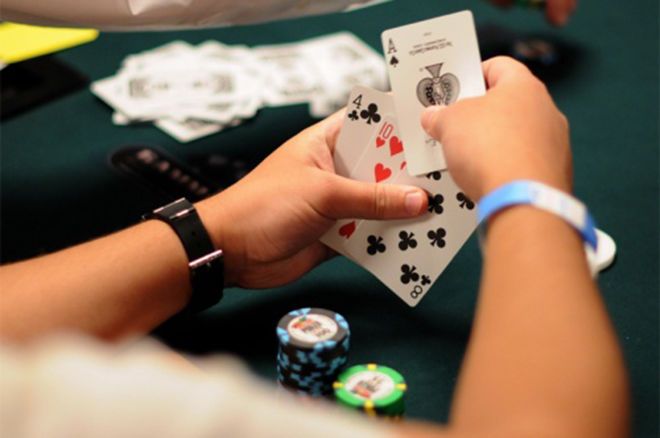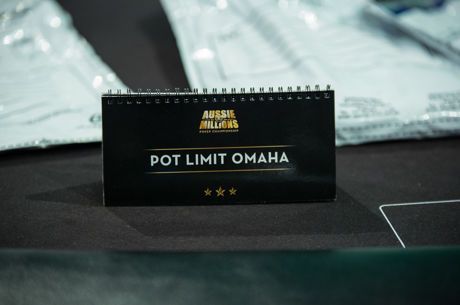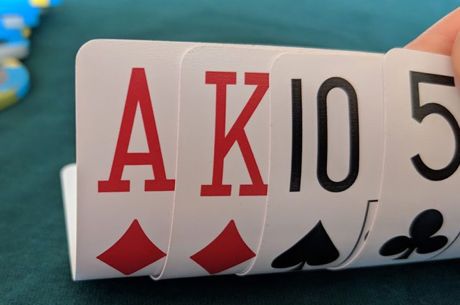Do Not Make These Five Common PLO Mistakes

Table Of Contents
- #1 Common PLO Mistakes – Playing too many hands that have unconnected or low cards
- #2 Common PLO Mistakes – Over-valuing small pairs and low rundowns
- #3 Common PLO Mistakes – Slow-plying too frequently, especially in multi-way pots
- #4 – Common PLO Mistakes – Playing out of position
- #5 – Common PLO Mistakes – Playing short-stacked
Pot Limit Omaha (PLO) is one of the most fun poker variants you can play online. You make big hands far more regularly than in No Limit Hold'em, the pots grow larger and do so faster, and the less experienced PLO players make the same mistakes over and over again, leading to PLO being potentially very lucrative indeed.
Most PLO mistakes can be prevented preflop. Think of the preflop stage of PLO as building the foundations of a house. Start from a solid base and you have a platform from which to build. However, get it wrong, and you're on shaky ground where your house, read that as bankroll, can come toppling down at any moment.
Those who frequent No Limit Hold'em games know there are 1,326 possible starting hands. PLO has 270,725 possible starting hands, so it is easy to see why preflop mistakes are more common in PLO games. With that in mind, let's start with a common preflop PLO mistake.
#1 Common PLO Mistakes – Playing too many hands that have unconnected or low cards
Receiving four hole cards gives PLO players plenty of freedom when it comes to starting hand selection; remember that you must use exactly two of your hole cards to make the best five-card poker hand possible. Ideally, you want your hole cards to be connected and/or be drawing to the nuts.
For example, a hand such as A♠K♦Q♠J♦ is a powerhouse hand preflop. It is double-suited for a start, and you can easily see you are drawing to the nuts. A hand such as A♠10♣10♥3♣ looks pretty to a Hold'em player but can get you into a lot of trouble. Similarly, even though A♠Q♣7♠2♦ can make the nut spade flush, it is a hand that you should toss into the muck for the most part.

#2 Common PLO Mistakes – Over-valuing small pairs and low rundowns
Players new to the nuances of PLO often over-value the strength of small pairs. They think hitting a set with a hand like K♥9♠4♦4♣ gives them a significant advantage but it does not in reality. Low sets are often dominated by superior sets in PLO, plus many boards will have potential flushes and straights that make continuing with a small set challenging.
Using the K♥9♠4♦4♥ hand above as an example, you are unlikely to have any backdoor draws to help you if your opponent shows any signs of strength after the flop. Imagine the flop comes down A♠10♠4♥. You have bottom set, but anyone playing with a pair of tens or aces in the hole, or a hand like K♠Q♠J♦10♦ or Q♥Q♦J♠10♠ has you in a whole world of pain.
It is a similar story with low rundowns. By this, we mean hands such as 6♥5♥4♣3♣. They look great and have some potential. However, any hand you make is likely to be at the lower end of the scale. Improving to a flush or straight leaves you vulnerable to stronger flushes and straights.
Three Tips for Switching to Pot-Limit Omaha
#3 Common PLO Mistakes – Slow-plying too frequently, especially in multi-way pots
Slow-playing a strong hand is a common tactic in No Limit Hold'em games but it can be deadly in PLO where you are in danger of being outdrawn. This danger amplifies whenever pots are contested with two or more opponents.
Improving to trips with J♣10♣ on a J♦J♥8♥ flop in Hold'em would be a great spot to slow-play your hand. But what if you hit the same flop with J♣10♣8♦7♦? Although you should be aware that the turn or river could improve an opponent to a better full house, you are more likely to have an opponent drawing to a flush or straight, or that has a hand with 8x8x in it. Even someone holding a hand like AxQxJx10x is a two-to-one underdog, which is usually as good as it gets in PLO.
Don't slow-play your hands. Either bet to protect your hand or bet to increase the pot size and maximize the value from players with strong yet inferior holdings.

#4 – Common PLO Mistakes – Playing out of position
Position is king in all flop games, but especially so in PLO. Limping in with mediocre hands from early position is not recommended, and neither is calling three bets from out of position. The power of position is tremendous in PLO and you should use it to your advantage, not allow it to become a disadvantage at the tables.
Limping from early position and then calling a raise is a recipe for bleeding away chips. Not only are you playing in a bloated pot but are doing so against an opponent that can see how you act and adapt accordingly.
How to Crush Three-Bet Pots in Pot Limit Omaha
#5 – Common PLO Mistakes – Playing short-stacked
Some players like to sit down with a short stack when they are learning a new game. They are told that mistakes made while deep stacked are more costly than if they are playing short. While this is true, playing short-stacked in PLO cash games is not advised.
First, your lack of chips means you are essentially unable to bluff or able to force opponents to fold their equity. Also, pots grow large fast in PLO, so you will often find yourself pot-committed with easily dominated hands, which tends to end badly.
Sit down at a micro-stakes table while you learn the ropes. Sites such as 888poker, PokerStars, and PartyPoker have PLO cash games starting at $0.01/$0.02 blinds where you buy in for $2. If you cannot face the prospect of losing $2 in a hand, then, unfortunately, PLO is probably not the game for you.








